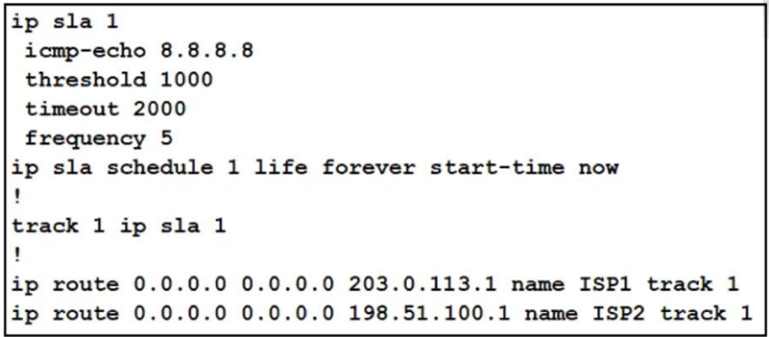
Refer to the exhibit. An administrator configures a router to stop using a particular default route if the DNS server 8.8.8.8 is not reachable through that route.
However, this configuration did not work as desired and the default route still works even if the DNS server 8.8.8.8 is unreachable. Which two configuration changes resolve the issue? (Choose two.)